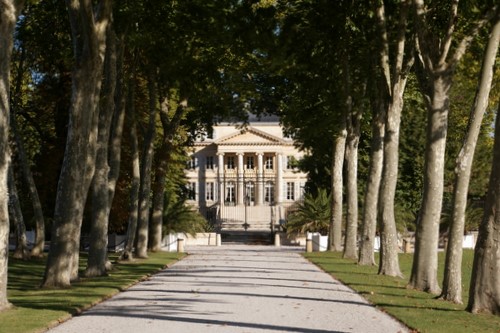In short, no.
I have just written up Tuesday’s presentation and tasting on the results from research carried out by Bordeaux first growth Chateau Margaux. This was presented by Paul Pontallier, and he displayed an incredibly open and thoughtful attitude in sharing details of the in-house experiments that have been going on there for a decade.
The full write up is here. This blog post focuses on perhaps the most newsworthy element, which is the trials of screwcaps that Margaux have been carrying out since 2002.
Trials began in 2002 with Pavillon Rouge (second wine) and have taken in other wines over time, including the Grand Vin. But when news got out that Margaux was experimenting with screwcaps, it all got a bit crazy. ‘I talked to some people about our experiments with screwcaps, and once this news had been published a lot of people thought that we had decided to bottle the whole or half the crop with screwcaps,’ recalls Pontallier. ‘I received plenty of mails. Half of them said “you are crazy” and the other half congratulated us that we had moved to screwcaps and that this was the modern way.’
‘Using a screwcap for white or red wines when you are sure they are all drunk after two or three years makes a lot of sense,’ says Pontallier. ‘But for wines that we expect to go through a very special evolution for 10, 15, 20 or 30 years, we don’t exactly know. We are not brave (or stupid) enough to use screwcaps without this knowledge.’
This trial involved two wines—a white and a red—and three different closures. Good quality natural cork of the type used for all top wines, and two screwcaps—one of which Pontallier describes as gas permeable (presumably with the saranex liner), and one of which is impermeable (the tin/saran liner). The latter is the type used almost exclusively for fine wines in Australia and New Zealand.
The red wine trial involved the third wine from 2003. This is a wine that at that time would have been sold off in bulk. Now it is bottled as a third wine. Unfortunately this was a poor wine indeed: quite oxidative and developed and with a rustic, almost medicinal edge that suggested some Brettanomyces. There is also the problem that natural cork is quite variable, and so we were comparing the screwcapped wines with just one expression of natural cork. Was this a good cork with very low oxygen transmission, or one with a bit more?
Of the three wines, I preferred number 2, and then number 3. Number 1 was my least favourite, as it was the most evolved. It turned out that 2 was natural cork, 3 was tin/saran screwcap and 1 was saranex screwcap. But none of the wines were particularly good, and there wasn’t a huge amount of difference between 2 and 3. A small majority in the room preferred 3 to 2. Fewer liked number 1. But this is with a wine that was probably a bit tired and somewhat oxidative when it was bottled in 2005, and which isn’t destined for long ageing. There’s a reason Margaux were selling it in bulk.
For the white wines, a 2004 second wine, the differences between the bottles was more marked. I liked number 1, which was the outlier. It was aromatic with some breadth to the palate, combining grapefruit and honey notes. I thought it was the most developed, and the best for current drinking. Numbers 2 and 3 were closer together, and really quite different wines to number 1. Wine 2 had a slight chemical-tasting edge to it, and showed fresh, pithy grapefruit characters. I felt it the freshest, but not the nicest. Wine 3 was probably my favourite, and was lively with fresh grapefruit character.
It turned out that 1 was cork, 2 was saranex screwcap and 3 was tin/saran screwcap. Pontallier, rather perplexingly, suggested that 2 and 3 were showing traces of oxidation and that 1 was the freshest, and his preferred. This was not the view held by the majority of the room. The key take home message is that the closure changes the wine. So which wine do you prefer?
It is unlikely that Margaux will be bottled under screwcap any time soon. ‘We are also experimenting with the first wine and Pavillon,’ says Pontallier, ‘but it is too early: 10 years is nothing for these wines.’
‘Our wines have an extraordinary potential to remain fresh for as long as a century or even more. So we have to be pretty sure if we are going to change the closure.’
Here’s a film from the event:
Leave a Comment on So will first growth Margaux soon be using screwcaps?


